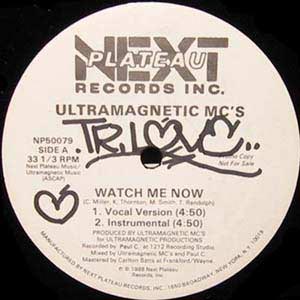|
Another type of sympathetic white student is the young man, immensely knowledgeable about rap, who lectures on the dangers of gangster rap, preferring “hip hop” and oldschool. Such students will write enviably authoritative papers on the Ultramagnetic MCs or the current underground scene. When they like new rap, it’s something non-commercial and positive (e.g., Talib Kweli). John, for example, undertakes a line of inquiry common to this kind of student, distinguishing between rap and hip hop: a big difference between the two forms is that hip hop seems more creative in the lyrical department flowing about topics that generally tend not to include gang warfare and bitches and the use of DJ’s over dats is a major difference.These young white (mainly) men are traditionalists. They often slip into their papers a reference to an anti-skinhead rally they attended, which is fine, of course. And they certainly support the music: I’m always impressed with the number of CDs and magazines they draw on in their assignments. But I ultimately distrust their project . . . for example, who is more lyrically creative than an ultra-commercial rapper like Tupac, Biggie, or Jay-Z? And when they brag about their skinhead rallies, they so often comment on how few black students were there. Their purist rejection of gangsta rap misses the positive political force of nihilism, arrogantly quarantining the genre out of, I think, a misplaced politics of unity. This excision of the gangsta-political seems an unfair revisionism of rap, and the bills for such bad-faith appropriation do add up. Ultimately, such white students have to accept hooks’ criticism that there is “a mass-based white consuming audience that is not interested in receiving values from Black people, but is interested in receiving ‘the juice’” (“Rap Wars” 84). Andy’s juice is oldschool flava, uncut by the mad social dramas of any later beats. In his paper on “Beat Bop,” the 1984 MC battle between Ramellzee and K-Rob, Andy smugly puts down contemporary rappers who bite from the song: “Cypress Hill has took Ramellzee’s nasal style and added a little west coast ideology and took off.” For his issue analysis, he attempted a persuasive paper (much like John’s above) on how he thought the oldschool ideals and skills were coming back: What changed over time was that after rap was successfully anchored into mainstream culture it lost it’s original ideals. . . . The good ol’ days are still being lived through by many people. . . . Songs with lyrical wizardry like this are really bringing rap back to the essence. These local scenes are centered around the original hip-hop culture, which included four things: rapping, DJing, break dancing, grafitti. “There are still people, and lots of them in this city (Chicago), who are making funky, funky hip-hop music, you just have to look harder to find ’em.” (Chill 33)But then I think how angry Andy got the day I played the Digable Planets in class. That evening he fired off an e-mail message to me, complaining how thoroughly anti-white the Five Percenters were. If some of my white students who have fairly little knowledge about rap can grow to appreciate the cultural critique inherent in gangsta, students like John and Andy might have too much knowledge: they resist the gangsta critique out of nostalgia for the promise of inter-racial harmony represented by Bambaataa's original b-boy movement. It's similar to the disappointment I feel at white students who, when reading Malcolm X, eagerly embrace the post-Mecca black humanist, writing about how the "true knowledge" of Islam allowed him to escape the evil Elijah Muhammad's brainwashing; that reading is too easy, too simple. But Andy ultimately proved open to knowledge; one of his last writings, an informal paper in which he traced the change in his views on rap over the last two months of the term, seemed a breakthrough: I have more respect for Tupac, I never used to like him that much. It isn’t just the fact that he changed it’s that I understand better that even though he tried so hard to be a bad ass, he was also very wise. . . . Whether or not he was rapping like he really lived, he was saying how he felt honestly, and also how a lot of other people in this country feel. I still can’t justify his abusive tone, but it’s more important to be honest than to front like you aren’t angry. Thinking about this has helped me to see better why gangsta rap is so angry as opposed to most reggae which comes from ghettos that are much poorer than in America and from a country where the class system is far more apparent.Andy’s change in understanding is pronounced; even if there is still that comparison to reggae to show us that his ultimate criticism is still on the table (as well as his ultimate misperception of American class realities), Andy is by no means a racist student. The difference between racism and non-racism in white students can perhaps be figured in the difference between seeing someone like Tupac as big nigger or badass.
|
